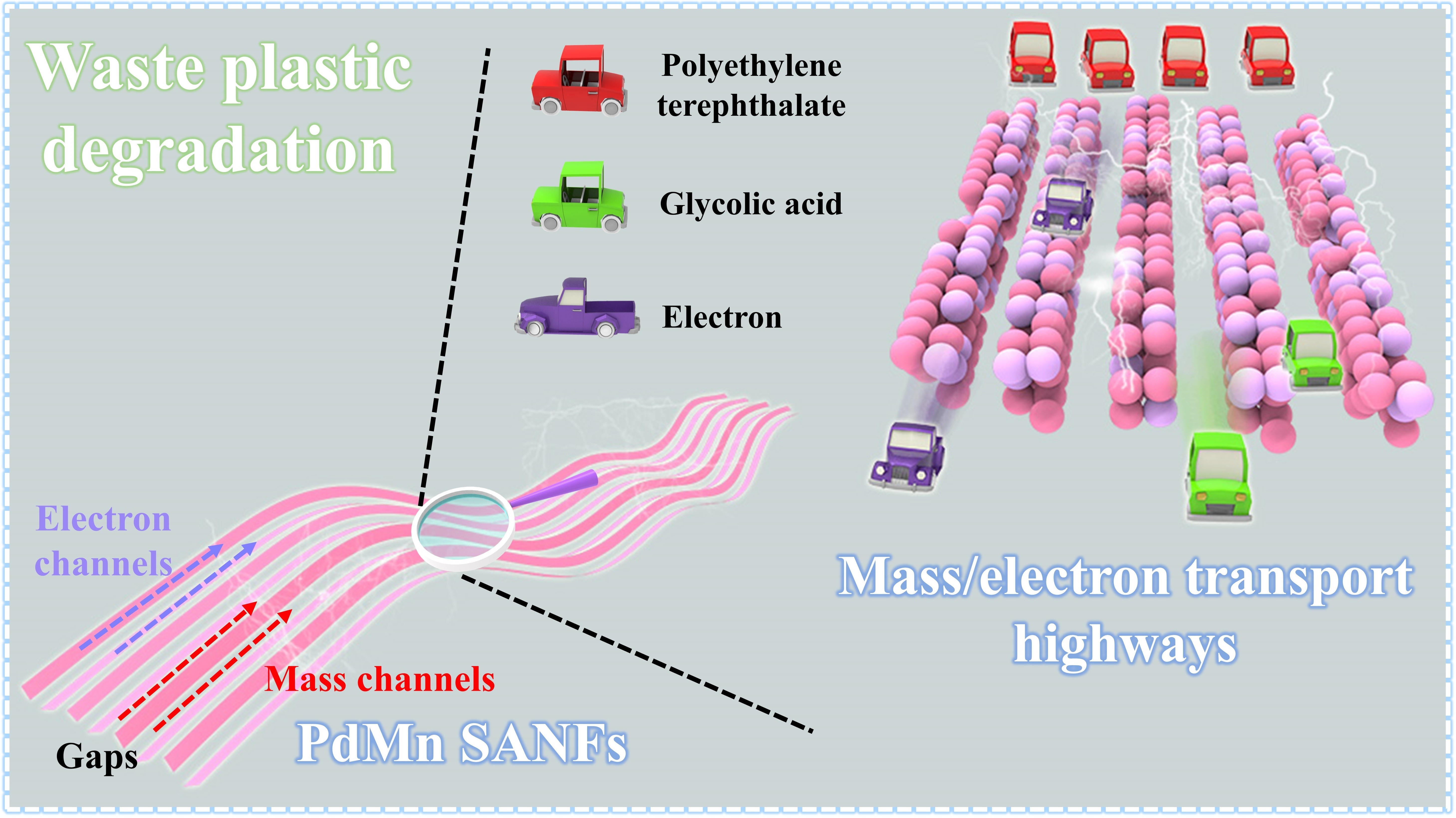Songliang Liu1, Kun Ma1, Huaifang Teng1, Weixin Miao1, Xiaotong Zhou1, Xuejing Cui1, Xin Zhou2,3* and Luhua Jiang1*, Shaojun Guo4*
1 Electrocatalysis & Nanomaterial Laboratory, College of Materials Science and Engineering, Qingdao University of Science and Technology, Qingdao 266042, P. R. China.
2 Interdisciplinary Research Center for Biology and Chemistry, Liaoning Normal University, Dalian, Liaoning, 116029, P. R. China.
3 College of Environment and Chemical Engineering, Dalian University, Dalian 116622, P. R. China.
4 School of Materials Science and Engineering, Peking University, Beijing 100871, P. R. China.
E-mail addresses: zhouxin@dlu.edu.cn, luhuajiang@qust.edu.cn, guosj@bju.edu.cn
ABSTRACT
Innovating nanocatalysts with both high intrinsic catalytic activity and high selectivity is crucial for multi-electron reactions, however, their low mass/electron transport at industrial-level currents is often overlooked, which usually leads to low comprehensive performance at the device level. Herein, we report a Cl−/O2 etching assisted self-assembly strategy for synthesizing a self-assembled gap-rich PdMn nanofibers with high mass/electron transport highway for greatly enhancing the electrocatalytic reforming of waste plastics at s industrial-level currents. The self-assembled PdMn nanofiber shows excellent catalytic activity in upcycling waste plastics into glycolic acid, with high current density of 223 mA cm−2@0.75 V (vs. RHE), high selectivity (95.6%) and Faraday efficiency (94.3%) to glycolic acid in a flow electrolyzer. Density functional theory calculation, X-ray absorption spectroscopy combined with in-situ electrochemical Fourier transform infrared spectroscopy reveal that introduction of highly oxophilic Mn induces a downshift of the d-band center of Pd, which optimizes the adsorption energy of the reaction intermediates on PdMn surface, thereby facilitating the desorption of glycolic acid as a high-valued product. Computational fluid dynamics simulations confirm that the gap-rich nanofiber structure is conducive for mass transfer to deliver an industrial-level current. This work not only provides a strategy to synthesize a class of brand-new Pd-based nanofibers, but also opens up their application in conversion of waste plastics to high-valued C2 products.
KEYWORDS: self-assembled PdMn nanofibers, gap-rich, electrochemical synthesis, waste plastics upcycling, glycolic acid
https://doi.org/10.1002/adma.202411148



